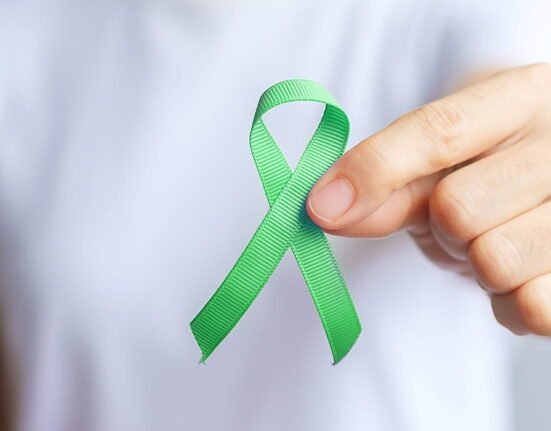Have you ever felt you have reached your emotional limit, like you just cannot take it anymore, even for the next minute? Everything starts to crumble, and even simple tasks like focusing, working, or just getting through the day seem like a battleground.
At such times, we feel the urgent need to get a hold of ourselves, or we just might burst. Crying can act like an emotional reset button when things get unbearable. Think of it like your phone or laptop, when it is overloaded, it heats up and starts to glitch. Eventually, you need to restart it and let it cool down so it can function at an optimal level again.
After all, we are not so different. When we are emotionally drained or exhausted, we either consciously take time to reset ourselves, or we reach a breaking point where the emotions spill out unexpectedly through sudden and unstoppable tears flowing down our cheeks. Crying in that sense is our system’s way of rebooting.
Let us explore how those once salty tears, born from pain, somehow leave us with a calm and sweet relief after they fall.
The Different Types of Tears
Tears are present from birth till the very end of life. Fun Fact – Humans produce 30 gallons of tears a year, and there are three different types of tears.
- Basal Tears – These are released in small quantities every day to keep our eyes lubricated and healthy.
- Reflex Tears – These tears are popularly known as irritant tears. They occur due to irritation in the eyes because of smoke, dust, allergic reaction, spicy food, etc and are produced in large quantities in comparison to basal tears.
- Emotional Tears – Also known as psychic tears, and are associated with our emotions. They are released when there is physical, emotional, and mental pain or at times of extreme happiness and laughter.
Interestingly, it is only emotional tears that provide a psychological release.
The Brain’s Role in Crying
Crying begins in the brain, specifically in the limbic system, the emotional centre. When we experience intense emotions, the amygdala gets activated and sends a signal to the hypothalamus, which activates the autonomic nervous system, which then signals to our lacrimal glands (tear glands) to produce tears.
But it is not just about tears. Crying activates multiple parts of the brain involved in emotional regulation, which is why it feels like a full-body experience.
Hormones and Chemical Changes
When we cry emotionally, certain hormones and chemicals are released:
- Cortisol, the stress hormone, often drops after a good cry.
- Endorphins, feel-good chemicals, are released, helping to ease emotional pain.
- Oxytocin, also known as the bonding hormone, gets released, which makes us feel comforted and connected.
This hormonal shift can explain the soothing effect we feel after crying.
Emotional Release and Mental Clarity
Crying gives us a chance to express what words sometimes cannot. It helps us in releasing emotional tension and achieving mental clarity.
- It helps us to process and regulate intense feelings.
- Reduces emotional overload.
- Provides us with a sense of clarity as the body calms down and the mind is no longer fogged up by tangled emotions.
- Sometimes we do not even know what exactly we are feeling, and crying can help bring those unspoken or buried feelings to the surface.
Read More: The Psychology Behind Crying: Understanding the Emotional Tears
Crying and Cultural Beliefs
While crying is natural, how people feel about it varies across cultures and genders. Many societies associate crying, especially for men, with a sign of sensitivity and weakness. This belief can lead people to suppress their tears, even when crying could be helpful.
Allowing yourself to cry is not a sign of weakness. It is a sign of emotional intelligence and self-awareness. In therapeutic settings, crying is often seen as a breakthrough, as it shows that we are processing our emotions deeply. Once we process and understand our own emotions, it gets easier to deal with them, and we get better at taking care of ourselves.
Why does crying sometimes not feel good?
Although crying usually helps, it does not always feel good. At times, it can leave us feeling drained or even worse. Some common reasons for this experience could be:
- When we do not receive support after crying.
- We feel ashamed or judged for crying.
- Sometimes crying can open a floodgate of emotions, especially if you have been holding things in for too long.
- Crying is not just emotional: it is also physical, and an excess of crying can cause tiredness, exhaustion, or a “heavy” feeling in your chest or eyes.
How to cry healthily?
- Let it happen: Don’t fight your tears. Suppressing emotions can increase stress.
- Be kind to yourself: Allow yourself to feel without judgment.
- Find a safe space: Cry in a place where you feel emotionally and physically safe.
- Reach out: If you are comfortable, talk to someone, as sharing emotions often doubles the relief.
- Consider it a signal: Frequent crying might be your mind and body asking for rest, support, or professional help.
Conclusion
Crying does not mean something is wrong; it often means you are letting things become right again. It is not just an emotional outburst, it is a natural, biological process that helps us release stress, regain balance, and connect with others. It reflects strength, emotional honesty, and the body’s built-in way to cope with life’s ups and downs.
So, the next time you feel tears coming, let them fall with grace.
References +
- Surgeon, R. R. E. H. a. N. (2021, January 21). What are the three types of tears? MedicineNet. https://www.medicinenet.com/what_are_the_3_types_of_tears/article.htm
- Marcin, A. (2017, April 14). 9 Ways Crying may benefit your health. Healthline. https://www.healthline.com/health/benefits-of-crying
FAQs
Q1: Is crying normal?
A: Yes, absolutely.
Q2: What if I cry too much?
A: Crying often is not always a problem, but if it is daily and uncontrollable, then it might be safe to consider talking to a mental health professional.
Q3: Can one cry for no reason?
A: Yes, sometimes it may feel like there is no reason, but your body could be processing stress, hormones or emotions you have not fully noticed yet.













Leave feedback about this